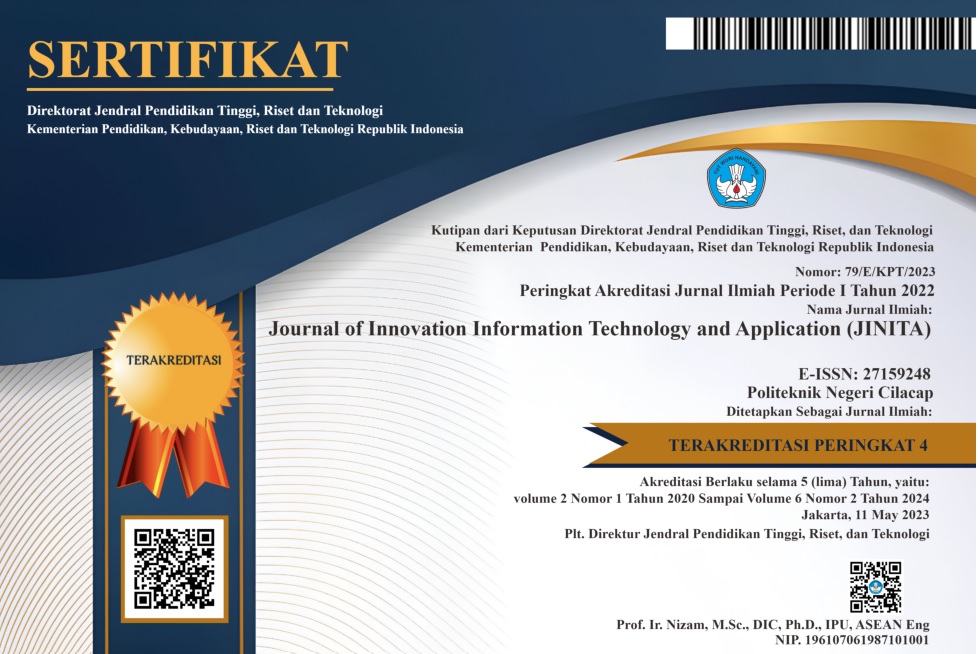Steganografi Video Digital dengan Algoritma LSB (Least Significant Bit) dan Rijndael
 Abstract views: 227
,
Abstract views: 227
,
 PDF (Bahasa Indonesia) downloads: 152
PDF (Bahasa Indonesia) downloads: 152
Abstract
Steganography is the science and art of hiding information so that confidential information cannot be known by others, except the sender and receiver. This research is designed to create a steganography system on video with mp4 format. The message is inserted in one of the video frames, first encrypted with the Rijndael algorithm. The method of inserting messages in the video frame is the Least Significant Bit (LSB) method. Extraction of frames on video using ffmpeg software. Qualitative testing used to identify changes in video frames with human senses. Quantitative testing was carried out by testing six videos with different resolutions, while there were five inserted messages with varying Byte lengths. The frame that has been inserted with a message is measured for noise with the Peak Signal to Noise Ratio (PNSR). The test results show that the LSB method cannot be used for message insertion whose Byte size is greater than the capacity of the cover video. There is a change in image quality if the size of the inserted message bytes is getting bigger.
Copyright (c) 2020 Journal of Innovation Information Technology and Application (JINITA)

This work is licensed under a Creative Commons Attribution 4.0 International License.
Authors who publish with this journal agree to the following terms:
- Authors retain copyright and grant the journal right of first publication with the work simultaneously licensed under a Creative Commons Attribution License that allows others to share the work with an acknowledgement of the work's authorship and initial publication in this journal.
- Authors are able to enter into separate, additional contractual arrangements for the non-exclusive distribution of the journal's published version of the work (e.g., post it to an institutional repository or publish it in a book), with an acknowledgement of its initial publication in this journal.
- Authors are permitted and encouraged to post their work online (e.g., in institutional repositories or on their website) prior to and during the submission process, as it can lead to productive exchanges, as well as earlier and greater citation of published work (See The Effect of Open Access).
















